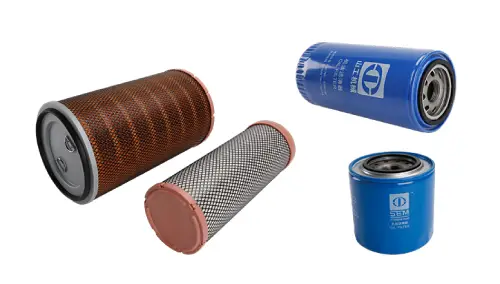

Introduction to Filters
Catalog
Description of FiltersTypes of FiltersFilters in PanasonicApplications of FiltersConclusionRelated ArticlesDescription of Filters
Filters are electronic circuits or devices designed to selectively allow or block specific frequencies or ranges of frequencies while passing others. They are essential components in various electronic systems, including communication systems, audio processing, and signal processing applications.

Filters
Purpose
The primary purpose of filters is to modify the frequency content of a signal. This can be achieved in several ways, depending on the type of filter and its intended application:
- Signal Processing: Filters are used to remove unwanted noise or interference from a signal, allowing only the desired frequency components to pass through. For example, in audio processing, a low-pass filter can be used to remove high-frequency noise from a recording.
- Frequency Selection: Filters can be used to select specific frequency bands for further processing or transmission. In radio communication, for instance, filters are used to select the desired frequency channel from a range of available channels.
- Signal Shaping: Filters can shape the frequency response of a signal to meet specific requirements. This is particularly important in applications where the signal's frequency content needs to be controlled to prevent distortion or interference.
Types of Filters
Filters can be classified based on several criteria, including their frequency response characteristics and the type of signal they process. Some common types include:
- Pass Filters:Low-Pass Filter (LPF): Allows frequencies below a certain cutoff frequency to pass through while attenuating frequencies above the cutoff. It is used to remove high-frequency noise or to smooth out signals.High-Pass Filter (HPF): Allows frequencies above a certain cutoff frequency to pass through while attenuating frequencies below the cutoff. It is used to remove low-frequency noise or to isolate high-frequency components.Band-Pass Filter (BPF): Allows frequencies within a specific range (band) to pass through while attenuating frequencies outside this range. It is used in applications like radio receivers to select a specific frequency channel.Band-Stop Filter (BSF): Also known as a notch filter, it blocks frequencies within a specific range while allowing frequencies outside this range to pass through. It is used to remove specific frequency components that may cause interference.
- Active vs. Passive Filters:Passive Filters: These filters are constructed using passive components such as resistors, capacitors, and inductors. They do not require an external power source and are generally simpler and less expensive. However, they cannot provide gain and have limited control over the filter response.Active Filters: These filters use active components like operational amplifiers (op-amps) in addition to passive components. They can provide gain and offer more flexibility in filter design, allowing for a wider range of frequency responses and better control over the filter's characteristics.
- Digital vs. Analog Filters:Analog Filters: These filters process continuous-time signals and are implemented using analog components. They are commonly used in applications where the signal is inherently analog, such as in radio frequency (RF) circuits.Digital Filters: These filters process discrete-time signals and are implemented using digital signal processing techniques. They are used in digital systems and offer advantages such as programmability, flexibility, and the ability to perform complex filtering operations.
Filters in Panasonic
Common Mode Noise and EMI Filters are ferrite devices used to help ensure signal integrity. Filters help remove noise from crucial signals to ensure proper data transfer and minimize unwanted frequencies. Filters also assist in limiting emissions.
Panasonic offers a wide line-up of Filters in a variety of sizes and types to meet the needs of different applications.
Common Mode Noise Filter
Common Mode Noise Filters are devices used to filter out undesirable frequencies in a signal. Common Mode Noise Filters are used to insure the integrity of the USB or HDMI signal to meet the standard required for those applications.
Panasonic offers Common Mode Noise Filters with benefits such as:
- Wide range lineup(Small size or Array type) for common mode noise suppression.
- Good signal integrity for high bit rate data transmission.
- Wide pass-band for differential signal.
- Simple multi-layer structure.
- Good durability and mounting reliability.
EMI Filters
EMI (ElectroMagnetic Interference) Filters are L-C filters that consist of a ferrite core and an MLCC. EMI Filters suppress electromagnetic noise.
The FCC has requirements (noise regulations) that limit the amount of noise that a device can emit, EMI Filters are used to help devices fall within government noise limits.
Panasonic EMI Filters are available in Surface Mount packages that are highly effective in noise suppression and data integrity preservation applications.
Applications of Filters
Filters are used in a wide range of applications across various industries:
- Audio Processing: Filters are used in audio equipment to equalize sound, remove noise, and enhance audio quality. For example, graphic equalizers use a series of band-pass filters to adjust the frequency response of an audio signal.
- Telecommunications: In communication systems, filters are used to select specific frequency bands for transmission and reception. They are also used to remove noise and interference from signals to improve the quality of communication.
- Image Processing: In digital image processing, filters are used to enhance images by removing noise, sharpening edges, and performing other image transformations.
- Control Systems: Filters are used in control systems to process sensor signals and control the response of the system. For example, a low-pass filter can be used to smooth out sensor noise in a feedback control loop.
Conclusion
Filters are fundamental components in electronic systems, playing a crucial role in shaping and processing signals. Their ability to selectively allow or block specific frequencies makes them indispensable in applications ranging from audio processing to telecommunications. Understanding the different types of filters and their applications is essential for designing and optimizing electronic systems.
Related Articles
What are Aluminum Electrolytic Capacitors?
Panasonic Polymer Capacitors:Types, Features, Functions, and Applications
Introduction to Insulated Gate Bipolar Transistor
Diode:Construction,Types & Principle
Panasonic Inverter Microwave Overview
Subscribe to JMChip Electronics !



















